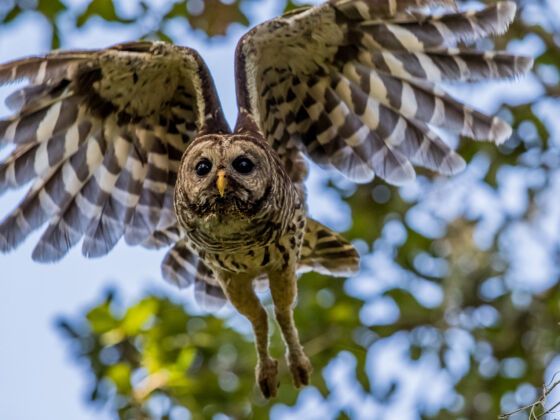Binoculars
With the naked eye, most birds are just LBJs—little brown jobs. Binoculars are your window into a whole new world where LBJs transform into explosions of bold colors and patterns that you never knew existed in nature.

With the naked eye, most birds are just LBJs—little brown jobs. Binoculars are your window into a whole new world where LBJs transform into explosions of bold colors and patterns that you never knew existed in nature.
But not all binoculars are created equal. My first piece of advice to new birders—get good binoculars. Birdwatching is difficult without quality optics. Think about it—you will be looking in the distance for a tiny bird darting quickly amongst a tangle of vegetation. You need binoculars with a crisp image and a broad range of view.
Don’t fall into the trap of thinking, “I’m just a beginner birder. I’ll buy cheap binoculars for now and if I decide to become a more serious birdwatcher later, I will invest in a better pair then.”
If you attempt to learn with cheap binoculars, you are at a high risk of getting frustrated and giving up on birding all together.
All birders—no matter what their level of experience—need a good pair of binoculars. Pay at least $300 for your binoculars. My binoculars are worth more than my car but, on the other hand, my binoculars have taken me to worlds that my car could never go.
Next, pick your number. Birders use binoculars within the range of 8×40 to 10×42. The higher the numbers, the better the magnification and light absorption are. However, the higher the numbers, the larger and heavier the binoculars are, and the higher the quality of your binoculars, the less you have to sacrifice when you want those higher numbers.
Magnification is important for observing fine details and light absorption is important when you are birding in the early dawn hours under a heavy canopy, which are normal birding conditions. If you have shaky hands, opt for the lower magnification (8). I use Swarovski 10×42 and would never go back.
Luckily, when it comes to field guides, there is not so much of a variance in price among brands.
Rule #1—choose a guide with illustrations rather than photographs. Illustrations are much more instructive than photographs. Illustrations highlight all of the distinguishing characteristics of the species and show the birds from the front and side, in flight, and in all plumages, including male, female, juvenile, breeding, and non-breeding. Raptors are shown from below since we often see them soaring overhead rather than just perched.
Photographic guides, such as the Audubon Guides, usually only show one angle and one plumage, which is basically useless for anything besides feeder birds or larger charismatic birds such as herons.
A good guide will also illustrate how the bird looks in the wild such as standing on rocks and creeping downward on tree trunks. Those habitat and behavioral observations are very good tools to help you identify a bird when you cannot do it based on physical features alone.
Rule #2—choose a guide that is regional or national in scale. Guides specific to one state are usually photographic guides. The Sibley Field Guide to Birds of Eastern North America is my bible but I can vouch for the National Geographic Guide, the Kaufman Guide, and the Peterson Guides as well in terms of the quality of the illustrations and depth of the text. Admittedly, if you came to my condo, you would find my bookshelves stuffed with state-specific guides. But I only use them as supplements.
For example, I have a guide to Florida birds which is useful for knowing in which plumage I can expect to find a particular species during the specific time of year I am visiting Florida.
Spotting scopes serve a very specific purpose—watching birds that tend to stay in one spot, such as ducks on a lake, a perched raptor, or shorebirds on the roost. Spotting scopes beat out any binoculars in terms of magnification but they don’t have the maneuverability of binoculars so don’t bother using a scope to search for birds in motion, such as warblers, wrens, and flycatchers.
Carrying a heavy scope and its tripod on a long hike can be cumbersome when you need to use your binoculars too but scopes are ideal if you are driving a refuge loop or can drive up to a lake. I prefer an angled eyepiece when I am birding with friends of different heights but it’s up to you whether to choose a fixed-magnification eyepiece of 20x or 30x or a zoom eyepiece that provides amazingly close views.
But, as with binoculars, brand matters if you want high magnification with a clear image and a relatively small and light scope.